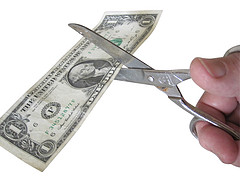
Pricing is both an art as well as science as we discussed in earlier post on Ten Commandments of pricing. There is no one right way to determine the price of products or services you are selling. To a large extent, the price is based on the value customers perceive to get from the product and what they are willing to pay for it.
The law of pricing says that you should charge each customer the exact amount he/she is willing to pay for it for maximum profit. This is how auction system works. You let each customers announce how much he wants to pay and pick the highest bid. While it would be ideal to determine the price in this fashion, in practice it becomes a challenge to sell your products this way. That’s why it is necessary for business owners to come up with an advertised price and augment it with other ways such as coupons to attract more customers.
So what factors do you need to consider when pricing your products and services?
As anyone with basic economics knowledge will tell you the supply and demand is what drives the price of everything. The higher the demand, the more customers are willing to pay and vice versa. Business owners can use this fact to calculate how much demand will go up or down with the decrease or increase in the price. They can use this knowledge to come up with an optimal price that will provide the highest profit. Notice that we didn’t say highest sales, because you can make more money even with lower sales as long as you are able to charge premium.
In addition, there are several other factors you should consider in your pricing equation as explained below.
- Competition – In general, higher competition will lead all businesses to lower their prices. Although it is not desirable to let your competition determine the price of your products it is still advisable to keep an eye on it to ensure the competition does not start eating into your business with irrationally low prices.
- Cost – Similar to competition we do not like to use cost to determine the price. Customers simply do not care how much it costs for you to make the product. However, you still need to understand it to ensure you do not price below variable cost. Doing this for an extended time is a sure recipe for bankruptcy.
- Economy – The economic downturn of the last 3-4 years has forced many business owners to lower their prices. This is a particularly difficult decision for high end retailers because they run the risk of diluting their brands with lower prices. However, it may be necessary to do so for short-term in creative ways. Just make sure customers don’t become accustom to lower prices and start viewing you in the same light as dollar stores.
- Business Objectives – Finally, you have to understand what your business stands for before working on the pricing of all products. Do you want to be high value (and high price) purveyor of goods and services or do you want to be low price leader? These are mutually exclusive business models. Wal-Mart should not aim to charge higher prices in the same way that Tiffany should not lower prices too much to attract more customers.
What do you think? Are there any other factors one should consider for pricing?
What do you think? Are there any other factors one should consider for pricing?







The 4-C framework in pricing suggest that pricing is determined by (C)ustomers Willingness-to-pay, (C)osts, (Competition), and (C)apacity.
The fourth C, capacity, is especially important in service businesses with high fixed costs and fluctuating demand. For example, pricing a hotel room in low season is very different than in prime season. In low season, you have to cover your variable costs only. In high season, you need to calculate the opportunity costs whenever you make a booking (ie. the likelihood that a customers pays more for the same room closer to the arrival day).
Stefan – Very good point on the capacity. In any scenario. you have to make sure you are covering variable cost. Thanks for your input.